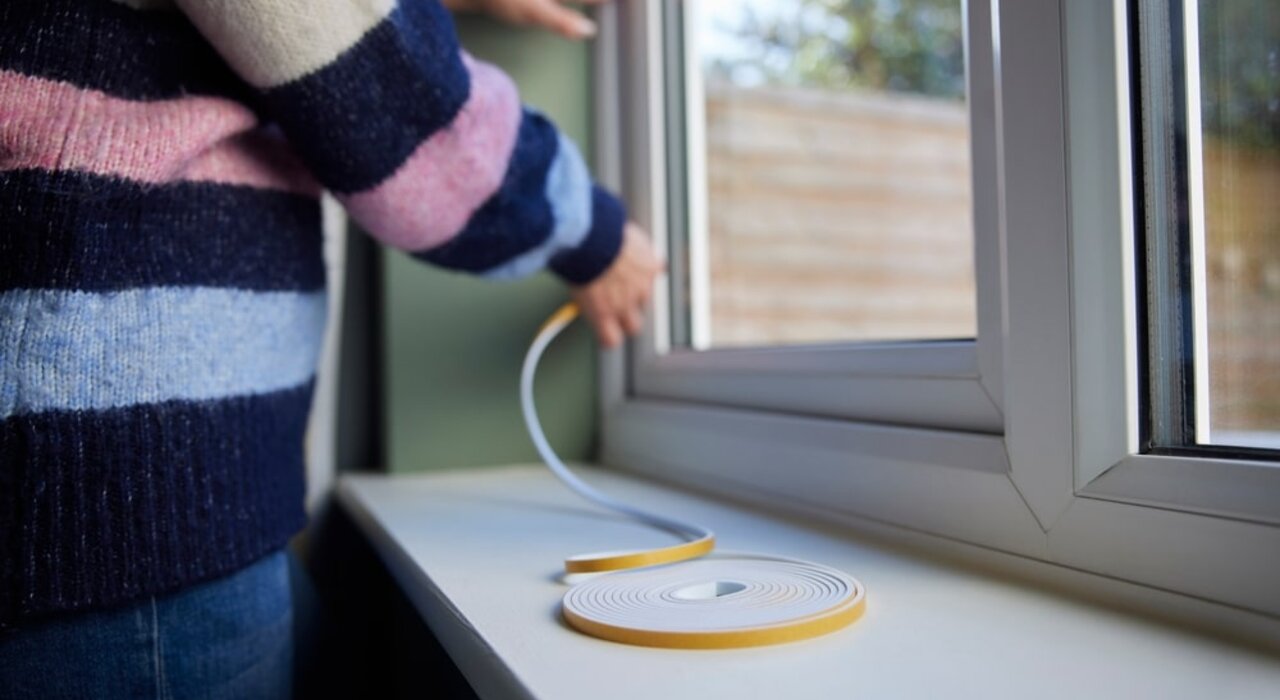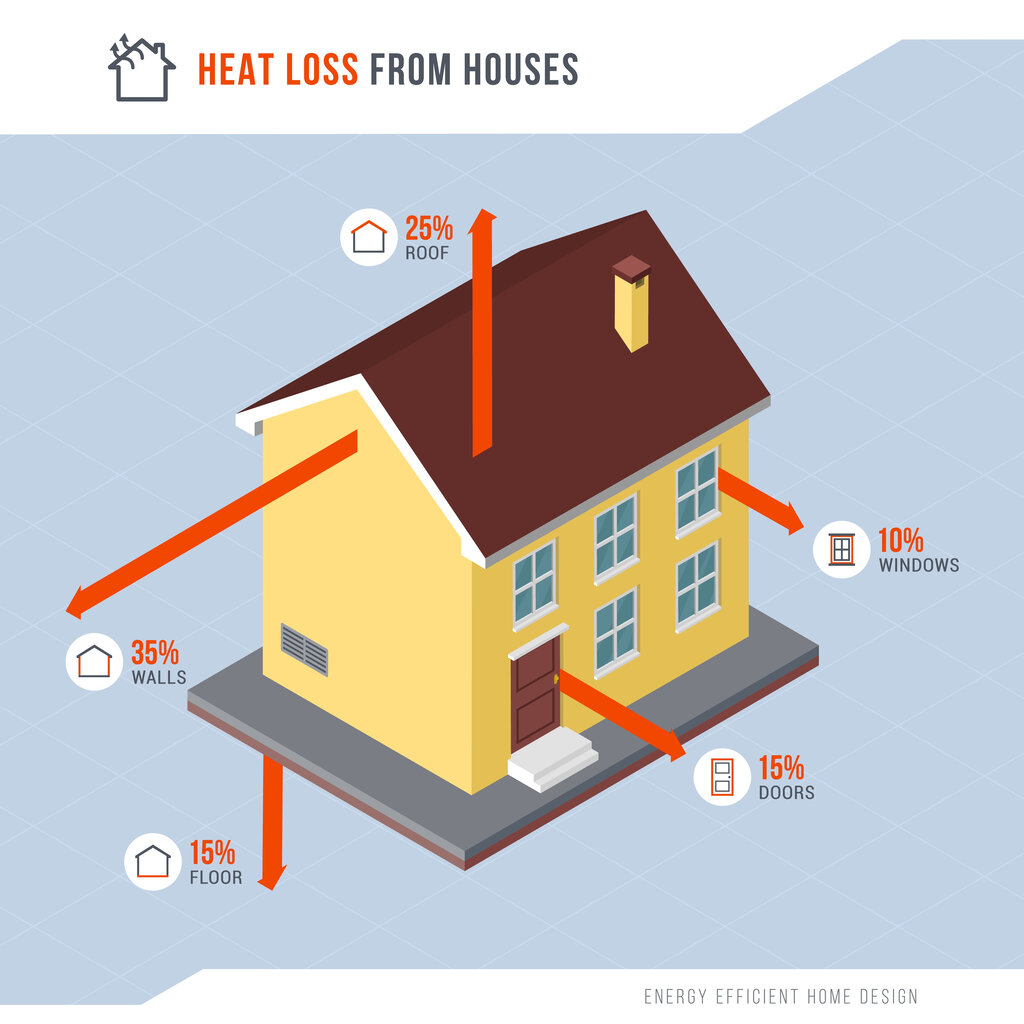
Amid a brisk British winter, the battle against the cold can often feel like a losing one. Draughts creeping through windows and chimneys are discomforting and ramp up our heating costs. Therefore, draught-proofing these areas in our homes is essential for comfort, efficiency, and economy. This blog explores the most effective ways to draught-proof windows and chimneys, ensuring a cosy, cost-effective home.
We have previously discussed heat loss through different portions of the home. While external walls are the biggest culprit at upwards of 30%, other features contribute. Chimneys, for example, are estimated to be responsible for 4-5% of heat loss. Windows and doors combine for a total loss of 25%. These are all significant and can be detrimental to the overall effectiveness of a thermal envelope.

Importance of draught-proofing
Draughts are streams of cold air that find their way into our homes through various gaps and cracks, particularly around windows and chimneys. These cold air intrusions disrupt the warm, stable environment we strive to maintain during colder months. The constant battle between the cold air from draughts and the warm air generated by our heating systems creates an inefficient cycle. This not only leads to discomfort but also significantly increases our energy consumption and heating costs. By effectively draught-proofing, we can create a barrier against these cold air streams. This results in maintaining a more consistent and comfortable temperature within our homes. It's not just about keeping the cold air out; it’s also about keeping the warmth in. When we draught-proof our homes, we reduce the workload on our heating systems, leading to lower energy usage and, consequently, reduced heating bills. Moreover, draught-proofing contributes to a more environmentally friendly home. By using less energy for heating, we reduce our carbon footprint, making a small but significant contribution to environmental conservation.
Draught-proof windows
- Weatherstripping: This simple yet effective method involves applying self-adhesive foam or rubber strips around the window frame. These strips compress to fill the gap when the window is closed, preventing cold air from entering. Weatherstripping is cost-effective and can be easily done as a DIY project. It's important to choose high-quality materials that will withstand wear and tear and provide a good seal for a longer period.
- Secondary Glazing: Particularly beneficial for single-glazed windows, secondary glazing involves adding another layer of glass or clear acrylic. This creates an air gap between the two panes, acting as an insulator against the cold. Secondary glazing not only improves thermal insulation but also helps in reducing noise from outside. While more expensive and complex than other methods, its effectiveness in improving energy efficiency and comfort makes it a worthwhile investment.
- Heavy Curtains: An often underestimated method, heavy, lined curtains can provide an additional layer of insulation. Thick fabrics or curtains with a thermal lining can trap the cold air between the window and the curtain, preventing it from entering the room. This solution is particularly appealing as it combines functionality with aesthetics, allowing you to choose curtains that complement your interior decor.
- Brush Strips: Ideal for sliding sash windows, brush strips can be fitted into the gap where the two sashes meet. These act like weatherstripping but are specifically designed for the sliding motion of sash windows. They effectively block draughts while allowing the windows to be opened and closed smoothly.
Draught-proof chimneys
- Chimney Balloons: These are inflatable devices specifically designed to fit inside the chimney cavity. Made from a special laminate, chimney balloons are inserted when the fireplace is not in use and inflated to create an airtight seal. They are affordable, easy to install, and can be deflated and removed when you wish to use the fireplace. It's important to remember to remove the balloon before lighting a fire, as they are not heat resistant.
- Chimney Sheep: Similar in purpose to chimney balloons, chimney sheep are made from thick layers of wool. They are placed in the chimney throat and held in place by a handle and rod. Wool naturally provides excellent insulation and is breathable, reducing condensation risks. Chimney sheep are environmentally friendly, easy to install, and can be removed as needed.
- Removable Chimney Caps: For chimneys that are not in use, fitting a cap on the top can be an effective solution. These caps are installed on top of the chimney pot and prevent cold air from descending the chimney stack. They also offer the added benefit of keeping out rain, birds, and other animals. It’s important to ensure that these caps are properly fitted and secure to withstand windy conditions.
- Draft Excluder for Fireplaces: For fireplaces that are occasionally used, a removable draft excluder can be a practical solution. These excluders are placed in the fireplace opening and can be made from various materials like foam or rigid insulation boards. They are designed to block draughts but can be easily removed when you want to light the fireplace.
Draught-proofing doors
- Weather Stripping: Just like with windows, weatherstripping can be applied to doors. Self-adhesive foam strips or rubber seals can be affixed to the frame of the door. For doors that see a lot of use, consider more durable materials like silicon or vinyl which can withstand frequent opening and closing.
- Door Bottom Brushes or Sweeps: These are attached to the bottom of the door and brush against the floor or threshold as the door moves, effectively blocking the gap through which cold air might enter. They are particularly useful for exterior doors that lead directly outside.
- Draft Excluders or Door Snakes: For a quick and temporary fix, especially in older homes with more substantial gaps, fabric draft excluders or door snakes can be placed at the base of the door. These are usually filled with insulating materials and can be moved aside easily when opening the door.
- Letterbox Brushes and Flaps: If your door has a letterbox, it can be a significant source of draughts. Installing a brush or flap on the inside of the letterbox can significantly reduce air infiltration while still allowing for mail to be delivered.
- Keyhole Covers: Even small openings like keyholes can let in draughts. Fitting a purpose-made cover or escutcheon with a draught-proofing flap can address this issue effectively.
Draught-proofing windows, chimneys, and doors is a cost-effective way to enhance the comfort and energy efficiency of your home. With the right materials and methods, you can enjoy a warmer, cosier living space and reduced heating bills. Remember, while DIY methods are effective, don’t hesitate to seek professional advice for the best results.
